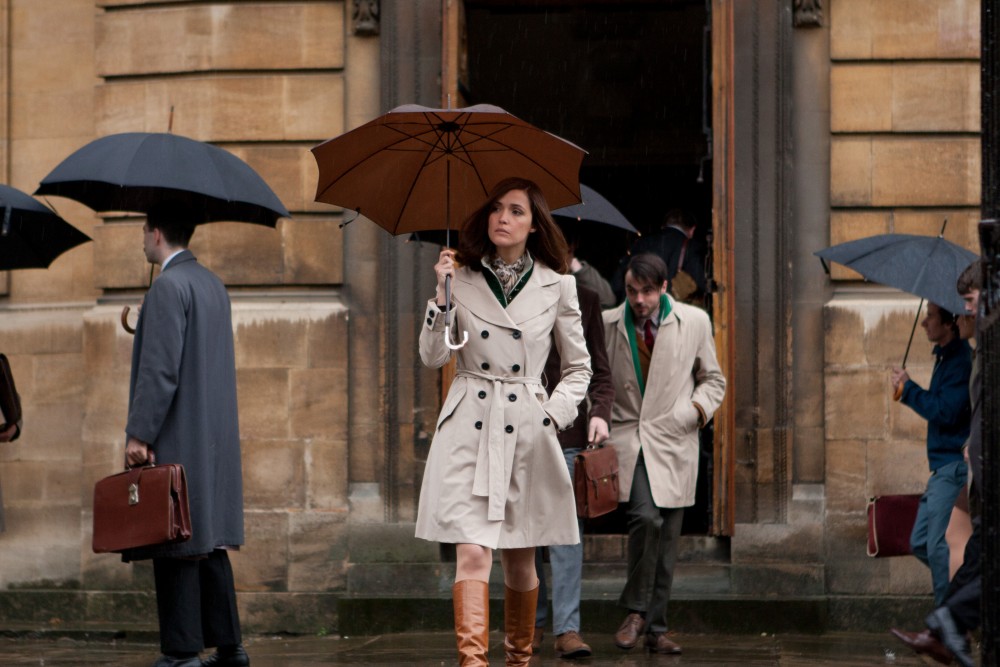
In an interview with EW, X-Men: Apocalypse writer Simon Kinberg confirmed Rose Bryne will be returning for the X-Men: First Class sequel to reprise her role as Moira MacTaggert.
“We ended First Class with Charles having wiped portions of her memory of her experience with the X-Men. They are, essentially, strangers to her when she meets them,” he told EW.
Byrne will join returning co-stars Jennifer Lawrence, Nicholas Hoult, Michael Fassbender, and James McAvoy. She will also join recently-introduced Oscar Isaac, who will be playing a central villain, and Sophie Turner, Tye Sheridan and Alexandra Shipp, who will be playing younger versions of Jean Grey, Cyclops, and Storm, respectively.
The sequel is set in the 1980s, which means the time period will jump forward by about 20 years – Patrick Stewart and Ian McKellen are said not to be reprising their roles, and we’re guessing the rest of the cast will have just aged very gracefully?
X-Men: Apocalypse releases May 27, 2016
by John Welshman
Downton Abbey opens with the telegram announcing that the Earl of Grantham’s heir, James Crawley, and his son Patrick, have perished in the sinking of the Titanic. Since Lady Mary was supposed to marry Patrick, the succession plans go awry, and this sets off a chain of events.
But how likely is it that an English aristocrat would have perished in the disaster? The British Inquiry (1912) found that those saved represented 203 out of 325 passengers in First Class (62.46%); 118 of 285 in Second (41.40%); 499 of 1,316 in Third (37.94%); and 212 of 885 members of the crew (23.95%). Overall, 711 passengers and crew were saved of the 2,201 on board (32.30%).
Not surprisingly, with the emphasis on ‘women and children first’, the proportion of women passengers saved in First Class (140 out of 144, or 97.22%) was higher than that for men. But 57 of the 175 men were saved, or 32.57%. In fact if you were a male passenger in Second Class your chances of survival were very slim indeed – only 14 of 168 were saved, or 8.33%. And in Third Class your chances were only slightly better – 75 of the 462 were saved, or 16.23%. It was these figures which reduced the overall odds for men, since for men overall – both passengers and crew – only 338 of a total of 1,667 were saved, or 20.27%.
The opening of Downton Abbey suggests that the Titanic was a potent symbol of luxury and privilege. To be sure, there were English aristocrats in First Class, figures such as Lucy Noel Martha Dyer-Edwards, born Kensington on 25 December 1878, who had married Norman Evelyn Leslie, the 19th Earl of Rothes in April 1900. The Eton-educated Sir Cosmo Duff Gordon, fifth baron, was travelling with his wife Lucy, the well-known fashion designer. He was a talented fencer, and had represented Great Britain at the 1908 Olympics. This was a world where wealth was derived from land, and where deference was the norm. But their fellow travellers in First Class were more likely to be American or Canadian. Among them were the property developer John Jacob Astor; the businessman Benjamin Guggenheim; John Borland Thayer, Second Vice-President of the Pennsylvania Railroad; George Widener, son of P. A. B. Widener, a member of the board of the Fidelity Trust Company of Philadelphia; Charles Hays, General Manager of the Grand Trunk Pacific Railway; and Isidor Straus, co-owner of Macy’s Department Store in New York.
Much of the fascination of the Titanic is that the personal narratives of individual passengers and crew provide insights into the worlds they came from. In First Class, we can find businessmen, their families, and the maids and governesses who travelled with them, privileged certainly, but predominantly men whose wealth was based on the new commercial opportunities offered in the United States and elsewhere. In Second Class, there were the teachers, clerks, minor businessmen, clergymen, small time inventors and others who represented the trades and the growing middle class that relied on them. In Third Class, we see the poor and under-privileged, the ironworkers, bricklayers, farmers, labourers, bakers, gardeners, fitters, butchers, carpenters, grocers, butlers, shop assistants, toolmakers, valets, and blacksmiths. Many of them were migrants, not only from Britain, and especially Ireland, but from Belgium, Finland, Sweden, the Lebanon, and a host of other countries, leaving poverty or oppression for a better life in the United States. And among the crew, the Captain, ship’s officers, surgeons, stewards, stewardesses, waiters, engineers, lookouts, firemen, cooks, and plate washers. This then, is the real world of 1912: one of class conflict, religious sectarianism, mistrust and suspicion, leisure for some but grinding poverty for others, racism and prejudice, faith in technology tempered with scepticism, and optimism mixed with anxiety about the future.
In fact,



